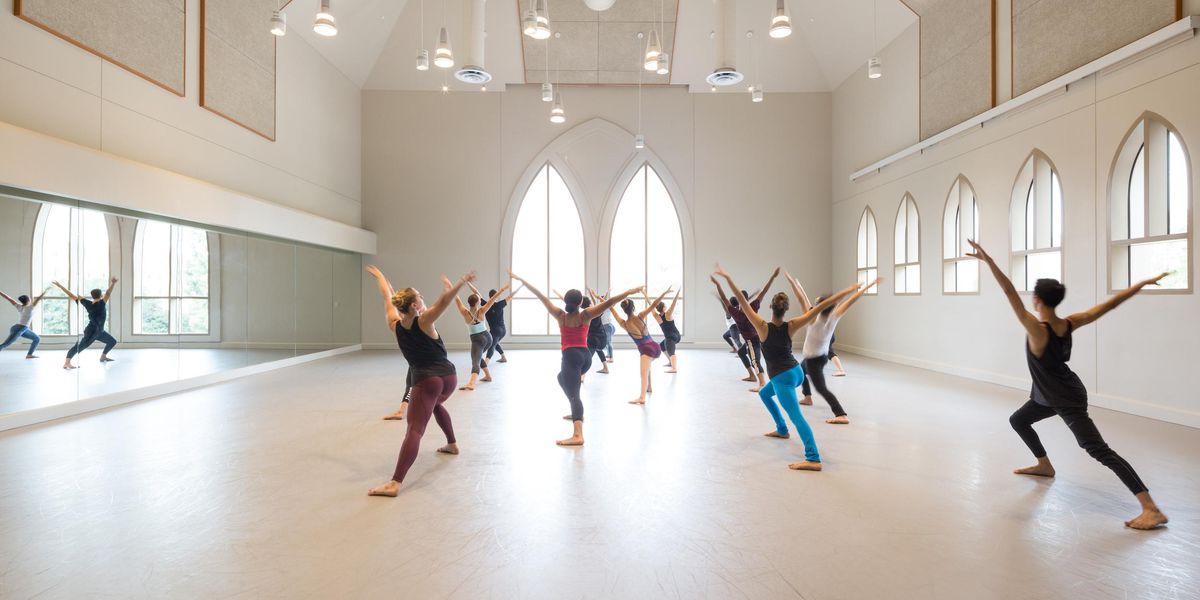San Francisco Ballet: Where Contemporary Ballet Thrives
Why was it so exciting to have San Francisco Ballet in town for two weeks? First answer: They brought pieces we haven’t seen over and over. Second answer: They have great dancers who are vivid individuals.
On this trip to Lincoln Center—they haven’t been here in five years—they wowed us with two major pieces that are spectacular in opposite ways, plus an assortment of other works, with some surprises.
The two big ones were Wayne McGregor’s Borderlands and Christopher Wheeldon’s Cinderella. The visual designs for both were absolutely stunning, the first in a stark, gripping way, Cinderella in its sheer theater magic.
Influenced by Josef Albers’ color theory, McGregor unleashes a torrent of movement in Borderlands that’s both animalistic and futuristic. Maria Kochetkova throws herself into the sometimes bizarre partnering, tangling, wrangling, almost strangling herself. Our eyes try to absorb the color changes (lights by Lucy Carter) at the same time as following the over-the-top inventiveness of the choreography. Kinetically, the whole ballet is a blast.
Sarah Van Patten and Frances Chung in
Borderlands.
At one point during Pascal Molat’s traveling solo (I love his grounded, juicy dancing), a big field of deep blue hits the floor in a place where he’s not dancing. The field moves around, almost like it’s chasing him. Finally it catches up with him, immersing him in a saturated blue, in which he proceeds to partner Sofiane Sylve. The effect is like James Turrell’s recent light installation at the Guggenheim. You felt part of it, inside the blueness.
Another high point was when six men vibrated their arms in fourth position, as though sawing through light and color. (In our April cover story, he explains that vibration in terms of color.) McGregor stretches beyond making a well-crafted ballet to maximal intellectual and kinetic engagement.
In Wheeldon’s full-length Cinderella, co-produced with Dutch National Ballet, the scenic design has drop-dead awesome effects in the service of whimsy and wonder. It’s not at all Disney-fied. The libretto, by Craig Lucas, gives us four “Fates” who watch over Cinderella and make good things happen. He also gives us a back story, in which we see her sobbing at the gravestone after her mother dies. The tree that grows up behind this headstone becomes strange and scary. Through miraculous projections (design by Daniel Bródie, direction by Basil Twist) its canopy seems to tremble with premonition, the wind and light streaking through its leaves. The Fates bring in wheels and don horse heads while her veil becomes the top of the coach—a coach made of not much more than the wind.
Maria Kochetkova as Cinderella with the four Fates.
Wheeldon’s choreography tells the story—and the several subplots—with a sense of enchantment and humor; he doesn’t rely on romantic clichés or obvious responses to the famous Prokofiev score. Simple sways and stiff-legged walks alternate with big swoops and turn-in-on-yourself partnering. The ballroom dance has the men lifting the women on a tilt. The sequence when the haughty stepmother gets drunk at the ball is a delight.
I saw two of the five casts. Both Cinderellas carried the two-and-a-half hour show with outsized star quality. Tiny Maria Kochetkova was touchingly vulnerable in the first act, while Yuan Yuan Tan, with her willowy limbs, was splendid in the ballroom scene.
In addition to risky commissions, SFB has a secret weapon in its choreographer in residence, Yuri Possokhov. His Classical Symphony gave the dancers vivid groupings, a kind of witty alertness, and plenty of bravura steps. It had more of a contemporary edge than some of the guest choreographers’ works.
Kochetkova and Hansuke Yamamoto in Possokhov’s
Classical Symphony.
Artistic director Helgi Tomasson opened the whole season with Trio, which begins with a burst of energy to a celebratory Tchaikovsky score. But the sweetest part was the middle section for Sarah Van Patten. With her distinctive, almost astringent quality, I don’t usually think of her as romantic. But she was luscious and tender in this scene, where she is torn between two men.
Sarah Van Patten and Tiit Helimets in Tomasson’s
Trio.
Wheeldon’s Ghosts departed from earlier works in that he used the ground in such an organic way. With a moon projected on the scrim (lighting design by Mary Louise Geiger), white filmy costumes (by Marc Zappone), these mysterious figures (are they dead or alive?) seemed to be in a graveyard; they rose out of the earth and disintegrated back down into it.
San Francisco Ballet in Wheeldon’s
Ghosts.
I missed Lifar’s Suite en Blanc, the only historic piece in the season. I did see the new works by Ratmansky (From Foreign Lands, with a lovely section where Sylve floats/falls back on one man after another), Edwaard Liang (Symphonic Dances, including a gorgeous duet for Tan and Luke Ingham), and Mark Morris (Beaux, for “liberated” men, wearing camouflage unitards of girly colors).
Sofiane Sylve in Ratmansky’s From Foreign Lands.
The overall feeling of the audience was pleasure mixed with awe and contentment. For the company, I hope they felt a triumph. Anyone who wants to debate the recent claims of a “crisis” in contemporary ballet would have plenty of ammo after seeing a few SFB performances.
All photos ©Erik Tomasson, Courtesy SFB.




